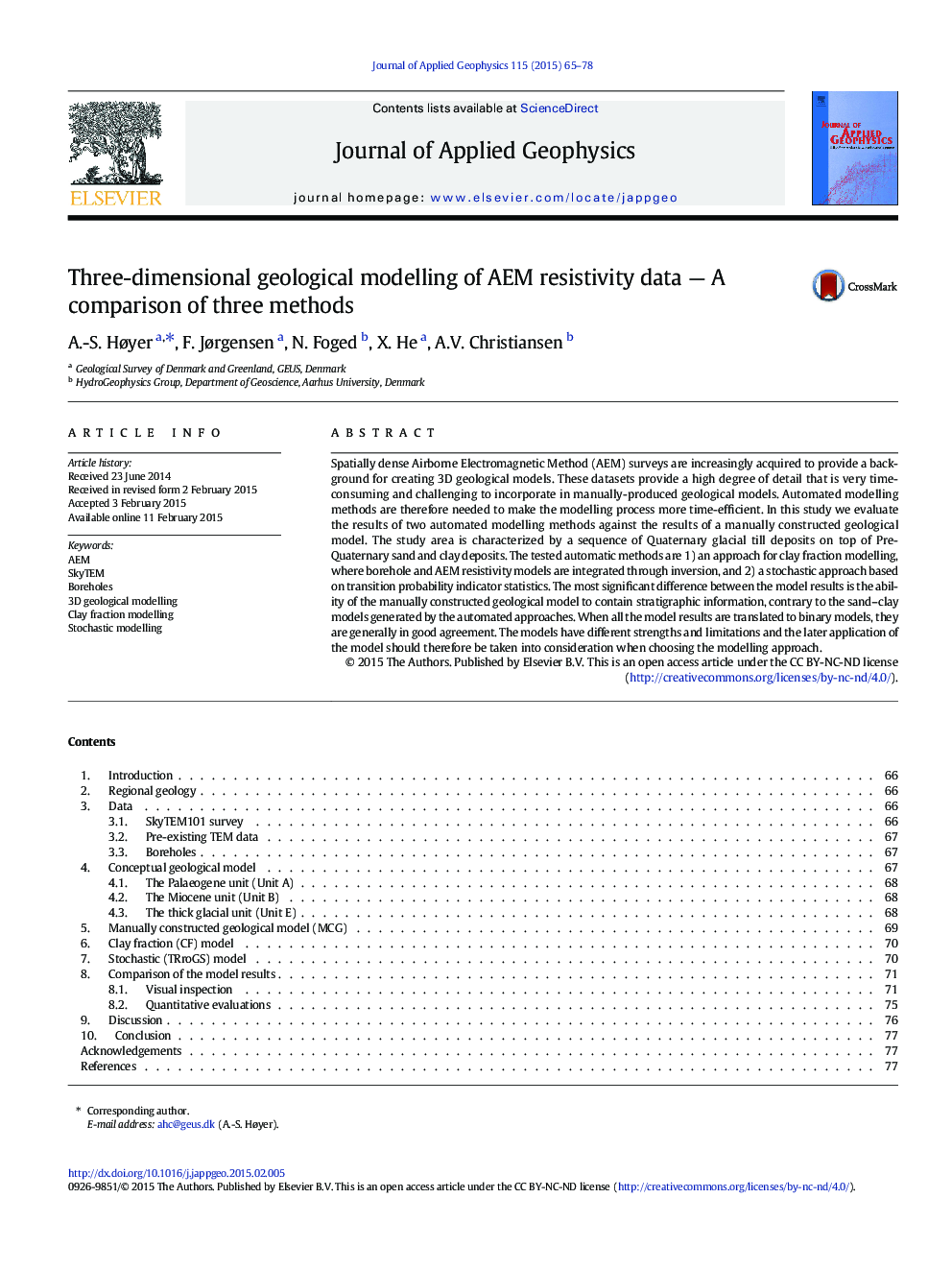| Article ID | Journal | Published Year | Pages | File Type |
|---|---|---|---|---|
| 6447199 | Journal of Applied Geophysics | 2015 | 14 Pages |
Abstract
Spatially dense Airborne Electromagnetic Method (AEM) surveys are increasingly acquired to provide a background for creating 3D geological models. These datasets provide a high degree of detail that is very time-consuming and challenging to incorporate in manually-produced geological models. Automated modelling methods are therefore needed to make the modelling process more time-efficient. In this study we evaluate the results of two automated modelling methods against the results of a manually constructed geological model. The study area is characterized by a sequence of Quaternary glacial till deposits on top of Pre-Quaternary sand and clay deposits. The tested automatic methods are 1) an approach for clay fraction modelling, where borehole and AEM resistivity models are integrated through inversion, and 2) a stochastic approach based on transition probability indicator statistics. The most significant difference between the model results is the ability of the manually constructed geological model to contain stratigraphic information, contrary to the sand-clay models generated by the automated approaches. When all the model results are translated to binary models, they are generally in good agreement. The models have different strengths and limitations and the later application of the model should therefore be taken into consideration when choosing the modelling approach.
Related Topics
Physical Sciences and Engineering
Earth and Planetary Sciences
Geophysics
Authors
A.-S. Høyer, F. Jørgensen, N. Foged, X. He, A.V. Christiansen,
